Samsung, LG review strategies as Trump slaps Vietnam with steeper tariffs
Korean chipmakers, automakers and tire makers are also in a precarious situation, girding for new US tariffs
By Apr 03, 2025 (Gmt+09:00)
LG Chem to sell water filter business to Glenwood PE for $692 million


KT&G eyes overseas M&A after rejecting activist fund's offer


Kyobo Life poised to buy Japan’s SBI Group-owned savings bank


StockX in merger talks with Naver’s online reseller Kream


Meritz backs half of ex-manager’s $210 mn hedge fund


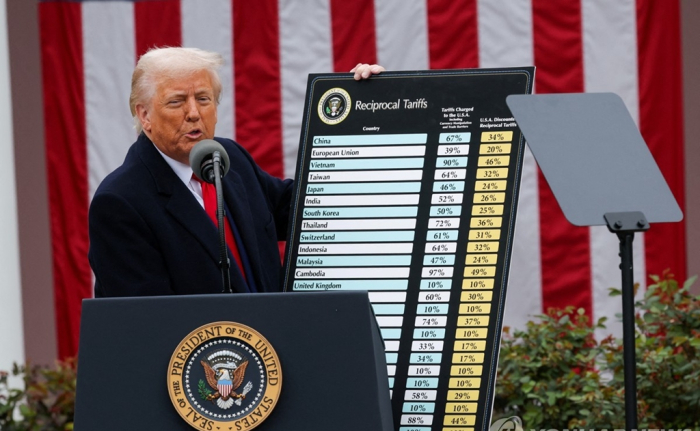
South Korea’s two leading electronics makers – Samsung Electronics Co. and LG Electronics Inc. – are being forced to reassess their global manufacturing strategies following the US government's new 46% tariff on products manufactured in Vietnam.
With Vietnam serving as the key production hub for Samsung and LG in Asia and globally, the tariff poses significant challenges for both companies, analysts said.
Samsung’s Vietnamese operations, concentrated in Bac Ninh and Thai Nguyen, are central to its smartphone and tablet PC manufacturing outside Korea.
The facilities produce up to 10 million units a month, accounting for 45% of Samsung’s global output.
Samsung’s four subsidiaries in Vietnam generated a combined sales revenue of $62.5 billion in 2024, with exports reaching $54.4 billion – equivalent to 14% of Vietnam’s total exports.
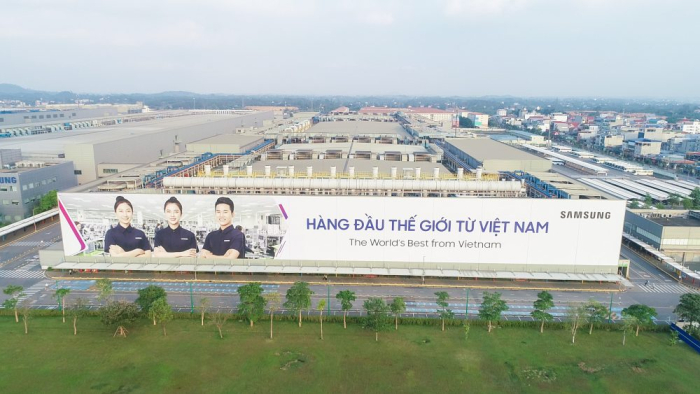
LG Electronics also relies heavily on Vietnam as a manufacturing base, with its Hai Phong factory producing significant volumes of home appliances. Its affiliate LG Display Co. also operates a panel production facility in Vietnam.
The combined revenue of LG Group’s three key Vietnamese plants reached 14.99 trillion won ($10.2 billion) in 2024 – a 9.6% increase from the previous year.
REPERCUSSIONS EXTEND BEYOND VIETNAM
On Wednesday, US President Donald Trump said his government would impose a minimum 10% baseline tariff on all imports to the US and various reciprocal tariffs depending on each country’s trade conditions.
The baseline and reciprocal tariffs will go into effect at 12:01 a.m. on Saturday and at 12:01 a.m. next Wednesday, respectively.
Under the scheme, South Korea will be slapped with a 25% reciprocal tariff.
Duties for other major countries are 49% for Cambodia; 46% for Vietnam; 37% for Thailand; 34% for China; 32% for Indonesia and Taiwan; 24% for Japan and Malaysia; and 20% for the European Union.
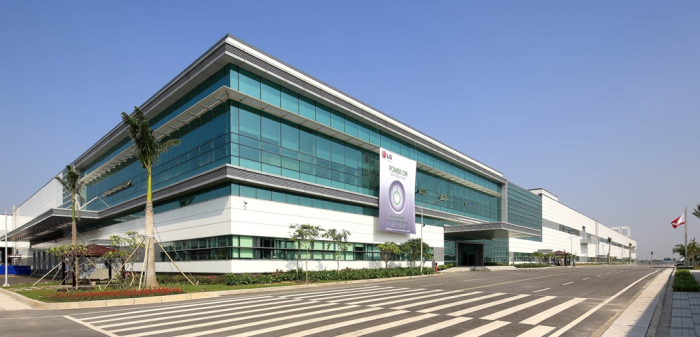
The tariff imposition has put Samsung and LG in a precarious position throughout Asia.
India, another emerging production hub for both Samsung and LG, has been slapped with a 26% tariff, complicating their diversification efforts.
Korean companies that operate production facilities in Asia include apparel maker Hansae Yes24 Holdings Co. and tire maker Kumho Tire Co. in Vietnam; Korea’s largest tire maker Hankook Tire & Technology Co. in Indonesia; and solar cell company OCI Holdings Co. in Malaysia. North Face supplier Youngone Corp. has manufacturing facilities in Vietnam and Cambodia.
The high tariffs are expected to lead to increased product prices and a contraction in consumer demand.
“We are closely working with the Korean government to address the negative impact of the reciprocal tariffs,” said a Samsung official.
RELIEF FOR MEXICO, CANADA
There is some relief as the US has spared Mexico and Canada – its partners in the United States-Mexico-Canada Agreement (USMCA) – from similar tariffs.
As the deadline for tariff enforcement approaches, Korean conglomerates are scrambling to determine their next steps.
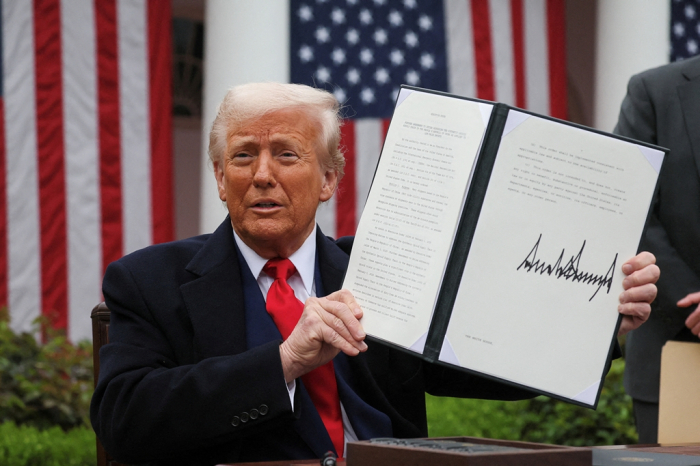
While some firms may pivot to Mexico or Canada to take advantage of USMCA provisions, others are bracing for a prolonged period of market uncertainty and rising costs.
Samsung’s competitor Apple Inc. is also facing supply chain disruptions, as over 90% of its production is concentrated in China.
The 34% reciprocal tariff imposed on China could increase Apple’s annual costs by $8.5 billion, according to a Morgan Stanley estimate.
CHIPS REMAIN EXEMPT – FOR NOW
While the US has outlined exemptions for certain sectors, including semiconductors, steel, automobiles, copper, pharmaceuticals and timber, questions remain about future policy shifts.
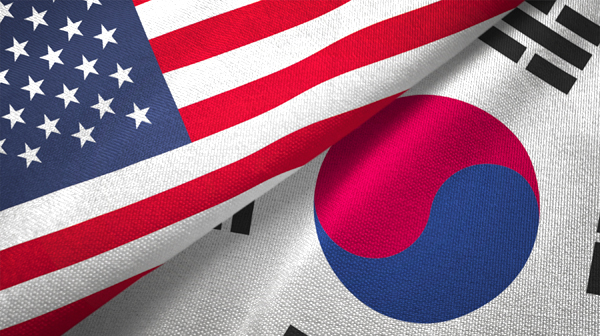
Samsung and SK Hynix Inc., the world’s two largest memory chipmakers, primarily produce memory chips in Korea and China.
Samsung’s NAND flash production in China mainly serves domestic customers, while SK Hynix also directs its China-made DRAM to local buyers.
About 7.5% of memory chips made in Korea are exported to the US.
The White House, however, said that even exempt products would be subject to sector-specific tariffs.
Given President Donald Trump’s previous stance on imposing a 25% tariff on imported semiconductors, industry watchers warn that Korean chipmakers must closely monitor potential policy changes.
If such tariffs are implemented, Samsung and SK Hynix may be compelled to accelerate plans to establish memory chip factories in the US, where rivals including US firm Micron Technology are expanding their presence.
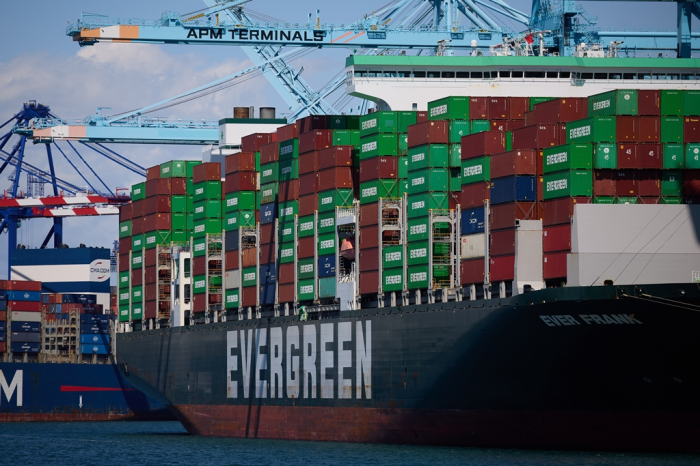
AUTOMOBILES, STEEL TARIFFS TAKE EFFECT
Effective April 3, the US is imposing 25% product-specific tariffs on imported automobiles and steel products.
According to research from IBK Economic Research Institute, Korea’s vehicle exports to the US could shrink by $6.36 billion due to the new US tariffs.
Last year, Korea’s US vehicle exports stood at 1.43 million units, including 1.01 million by Hyundai Motor Co. and sister firm Kia Corp. and 410,000 units by GM Korea. Korea’s US vehicle shipments accounted for 35% of its automobile production and 51% of total vehicle exports.
Last month, Hyundai Motor Group said it will spend $21 billion to expand its manufacturing in the US to help offset higher US tariffs on imports.
Meanwhile, tire manufacturers with factories in Indonesia or Vietnam, including Hankook Tire and Kumho Tire, are expected to face substantial losses from exports to the US, analysts said.
Write to Jeong-Soo Hwang, Ji-Hye Min and Sang-Hoon Sung at hjs@hankyung.com
In-Soo Nam edited this article.
-
 Business & PoliticsSamsung's Lee meets with Xi amid Beijing’s balancing act vs Washington
Business & PoliticsSamsung's Lee meets with Xi amid Beijing’s balancing act vs WashingtonMar 28, 2025 (Gmt+09:00)
2 Min read -
 AutomobilesHyundai Motor to invest $21 billion in US amid tariff concerns
AutomobilesHyundai Motor to invest $21 billion in US amid tariff concernsMar 25, 2025 (Gmt+09:00)
4 Min read -
 Leadership & ManagementSamsung Chairman Lee meets with Xiaomi CEO Lei Jun for partnership
Leadership & ManagementSamsung Chairman Lee meets with Xiaomi CEO Lei Jun for partnershipMar 24, 2025 (Gmt+09:00)
3 Min read -
 Business & PoliticsS.Korea wary of inclusion on US ‘Dirty 15’ nations list for reciprocal tariffs
Business & PoliticsS.Korea wary of inclusion on US ‘Dirty 15’ nations list for reciprocal tariffsMar 19, 2025 (Gmt+09:00)
3 Min read -
 Business & PoliticsKorea sees record February auto exports before looming Trump tariffs
Business & PoliticsKorea sees record February auto exports before looming Trump tariffsMar 18, 2025 (Gmt+09:00)
2 Min read -
 Food & BeverageKorean bakery giant SPC to build $160 mn US plant as tariff war escalates
Food & BeverageKorean bakery giant SPC to build $160 mn US plant as tariff war escalatesFeb 03, 2025 (Gmt+09:00)
3 Min read -
 Business & PoliticsSamsung, LG consider moving electronics plants to US from Mexico
Business & PoliticsSamsung, LG consider moving electronics plants to US from MexicoJan 21, 2025 (Gmt+09:00)
4 Min read -
 RetailE-Land sets sights on Vietnam as its next China, to open 10 outlets by 2025
RetailE-Land sets sights on Vietnam as its next China, to open 10 outlets by 2025Dec 02, 2024 (Gmt+09:00)
2 Min read -
 ElectronicsSamsung Display to build $1.8 billion OLED plant in Vietnam
ElectronicsSamsung Display to build $1.8 billion OLED plant in VietnamSep 24, 2024 (Gmt+09:00)
3 Min read -
 EconomyVietnamese lead influx of foreign workers with Korean dream
EconomyVietnamese lead influx of foreign workers with Korean dreamAug 19, 2024 (Gmt+09:00)
4 Min read


